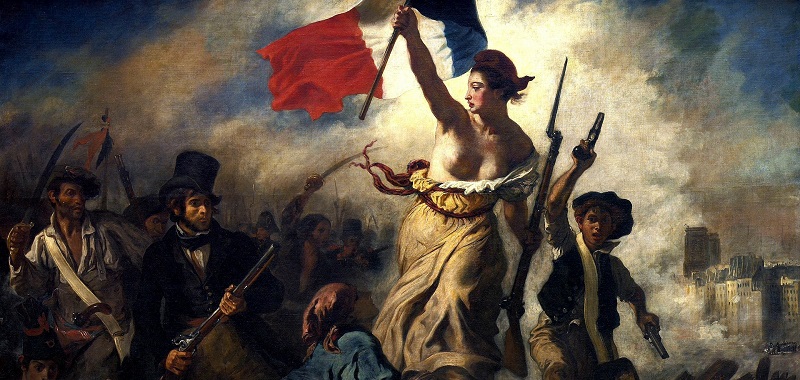Research 101: Exploring the Historical Context Behind the Opera
Every singer has a process for learning a new operatic role, from reading the libretto and checking out the source material to translating and rehearsing. During that process, it is expected that any serious musician will spend time studying the composer and musical period in which the opera takes place. However, time devoted to understanding the historical context behind the plot is often overlooked. Since its inception, opera has traditionally drawn on historical events for inspiration, from stories of the infamous Roman nobility to influential royals, wars, and political upheavals. If the opera you are currently learning falls within this tradition of drawing on the past and you devote time to researching the work's historical circumstances, you are guaranteed to develop a deeper connection to the role you are portraying.
To demonstrate how to effectively summarize these historical events and figures, we're going to use Umberto Giordano’s verismo opera, Andrea Chénier, as an example. If you happen to be preparing to sing the title role of Andrea Chénier, congratulations! We did the bulk of the research for you! By the end of this article, we will have created a study guide that can then be used for reference for your own role preparation. Giordano's opera not only draws on an infamous moment in history, the French Revolution, but also makes it's title role a factual victim of the tumultuous times, thereby making this production an excellent case study. Before you begin your historical research, however, it's important to catch up on the opera's synopsis if you're unfamiliar with it so that you fully understand the story and major reference points. For our purposes, the synopsis for Andrea Chénier can be found here.
Step 1: Research the Historical Event
Once you've gone through the synopsis of the opera you're studying, turn your focus toward the historical events within which the opera's plot takes place. Since we want to be thorough but don't always have the time to spend hours and hours on researching, try to stay within the perimeter of the events actually happening within the opera. For Andrea Chénier, that perimeter is the French Revolution in 1789 and again in 1793-94. Here's what an overview of this historical period might look like:
- “It was the best of times, it was the worst of times…” If he had had the opportunity to read Dickens’ novel, Andrea Chénier would most certainly argue for the latter. Towards the end of the 18th century, France experienced a perfect storm of circumstances leading to the inevitable political and social upheaval that became the Revolution: enormous national debt, the rise of Enlightenment ideals, peasant discontent with the arbitrary injustice of a lingering feudal system, the desire for political power and influence among the bourgeoisie, and famine paired with population increase.
- While the meeting of the Estates-General (the representative assembly of three “estates” - the clergy, the nobility, and everyone else) in May of 1789 and subsequent creation of the National Assembly in June of 1789 was the initial moment for proposing political reform in France, it wasn’t until the storming and fall of the Bastille on July 14th, 1789 that things began to truly turn towards revolution. Peasants began to rise up against their lords and refuse to pay unfair taxes. Thousands of Parisians marched to Versailles (the principal residence of the monarchy since Louis XIV) and forced the royal family to return to Paris for the first time in over a century. In short, the political climate in France went from dissatisfaction to insurgency really quickly.
- Fast forward to 1793: due to foreign warfare on several fronts, as well as internal rebellions and counter-revolutionary forces, the National Convention (formerly the National Assembly) effectively suspended democratic politics. The radical Jacobin party seized political control and successfully abolished the monarchy, replacing it with a republic. In the four years since the revolution began, several political factions dominated the political arena, each appearing more radical than the last, which led to the rise of Maximilien Robespierre and the Reign of Terror.
- While Robespierre had already been a prominent political figure prior to 1793, it wasn’t until he headed the Committee of Public Safety (a new de facto executive branch of government) that the revolution really took a turn towards extreme violence and paranoia. Robespierre believed that the nation needed to be purified before he could successfully establish a republic, resulting in an enormous increase in citizen arrests and executions based on vague accusations. During the Reign of Terror, an estimated 300,000 people were arrested, and at least 17,000 of those were executed. Thousands of others also died due to mob violence without trial or overcrowding in prisons. Ten months later in July 1794, Robespierre himself became a victim of the Terror.
Step 2: Research the Historical Figure
Learning about the life of a historical figure, especially when you are the one portraying that figure in the opera, requires a bit more time and depth of study. While it's crucial to be aware of any historical information that relates directly to the character's life within the opera, it's equally important to study the historical figure's life leading up to that moment captured in the opera. More often than not, those life experiences and events that occur before the plot begins help color the character in a specific, detailed way. The following summary exemplifies how we would document the biographical life of Andrea Chénier when learning the role:
- Poet and political journalist André Marie Chénier was a leading literary figure whose work helped create the 19th century Romantic Movement. Though his works are deeply respected today, the first collected edition of his poetry wasn’t published until 25 years after his death, and only two of his works were published during his lifetime.
- Born in Constantinople to a French father and Greek mother, Chénier moved to France with his family in 1772. The combination of his mother’s heritage as well as his education prompted the young poet to become extremely well versed in the classics, particularly in Greek poetic style. After spending a few years in London as the French ambassador's secretary, Chénier returned to revolutionary France in 1790. Like many at the time, he optimistically believed that the revolution had already run its course and that all that remained was the creation of a new reign of law. Instead, the revolution continued and became more divided and radicalized, prompting Chénier to begin writing political articles and satire in addition to poetry in support of his political views and criticisms. While he fully supported the revolution, he became more and more actively opposed to the extremist views of the Jacobin party and openly attacked several members of the party in his writings.
- In 1793, the moderate political party that Chénier identified with was thrown out of the National Convention. The newfound insecurity of his own position led the poet to retreat from public life and leave Paris, where he continued to write poetry regularly. In March 1794, however, Chénier was arrested at a party; he just happened to be in the wrong place at the wrong time. While being held at the prison of St. Lazare, Chénier wrote some of his most striking poetic works, including La Jeune Captive, inspired by fellow inmate and noblewoman, Aimée de Coigny.
- Chénier was tried before the Revolutionary Tribunal, found guilty, and was guillotined on July 25th, 1794. Robespierre and his followers had not forgotten his critical political publications from years past and were out for blood. Unluckily, Chénier was one of the last victims to be sacrificed during the Reign of Terror; Robespierre and his most faithful colleagues were overthrown and executed just three days later.
We hope that this exploration of the historical context behind the opera inspires you to incorporate more time for research into your own role study. If you're unsure of where to start, a simple Google search of the topic at hand is easy and effective. You'll not only uncover books, articles, and websites devoted to said topic but also discover some less conventional means of acquiring information, such as podcasts and videos. Historical research doesn't have to be stressful and can actually help provide additional motivation for uncovering your role study needs. If you found this breakdown of Andrea Chénier helpful, please let us know what operas you might like us to cover in the future! Good luck with your research!








